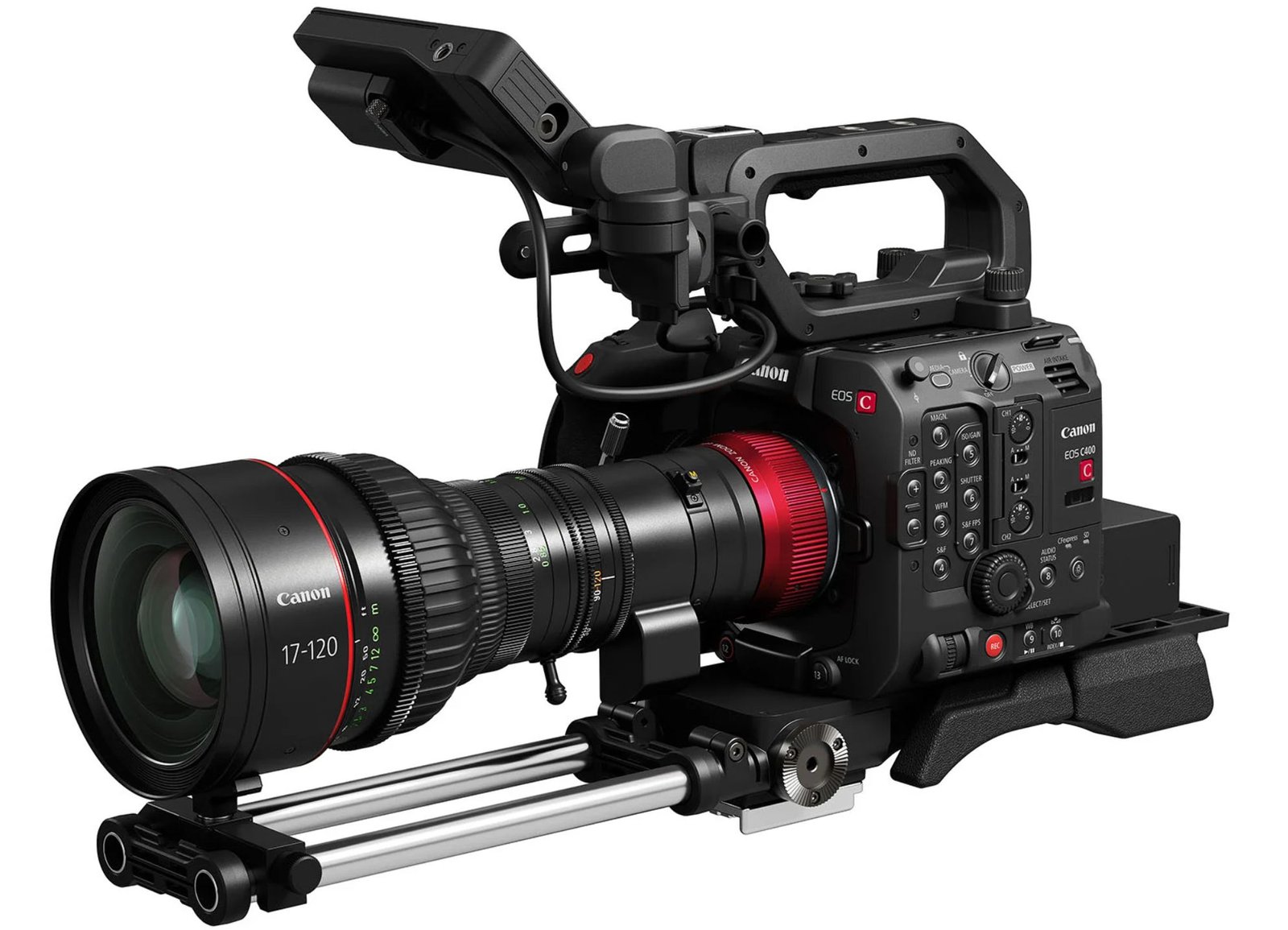Canon continues to expand its line of cinematic video cameras with the launch of the Canon EOS C400. Officially announced to complement the Canon EOS Cinema lineup, which already includes the EOS R5C and EOS C70, the EOS C400 introduces the latest innovations and features to fill the gap between the EOS C300 III and the EOS C500 Mark II.
Canon EOS C400: Compact Design and Dimensions
Although it uses the same RF mount, the Canon EOS C400’s design differs from that of the EOS R5C and EOS C70. The EOS C400 adopts a boxy design similar to the EOS C300 III and EOS C500 Mark II. The camera’s body is 10% smaller than the C500 Mark II, making it more portable and practical for various shooting needs.
Comprehensive Connectivity
The smaller size does not compromise its connectivity. The EOS C400 is equipped with a variety of ports, including 3G-SDI and 12-SDI out, USB-C, headphone jack, two mini XLR inputs, HDMI port, and terminals to support broadcasting. With these comprehensive ports, the EOS C400 ensures high flexibility in various video production environments.
Impressive Sensor and Video Capabilities
Despite its compact body, the EOS C400 is packed with the latest stacked BSI-CMOS full-frame 6K sensor. This sensor has been updated to process 4K and 6K video faster and supports triple-base ISO (ISO 800, 3200, and 12,800) with a dynamic range of up to 16 stops. These features allow for exceptional video quality, even in challenging lighting conditions.
Dual Pixel AF II Autofocus System
For fast and accurate focusing needs, the EOS C400 features Dual Pixel AF II technology. This autofocus system covers the entire sensor area, ensuring optimal performance in various shooting situations. This feature is invaluable in professional video production that requires sharp and responsive focus.
Advanced Video Recording Capabilities
The Canon EOS C400 offers a range of advanced video recording options. The camera can record 6K video up to 50 fps in 120-bit Cinema RAW Light format. Additionally, it supports 4K RAW recording at 120p and 2K RAW up to 180p. The latest Canon RAW Light format provides three recording modes with varying quality and file sizes, offering greater flexibility in production settings.
XF-AVC Codec
In addition to Cinema RAW Light, Canon has developed the XF-AVC codec for the EOS C400. This codec allows 4:2:2 10-bit oversampling video recording at frame rates up to 120p. The XF-AVC codec is widely supported across various industries and is compatible with popular video editing platforms, making it a strong choice for different types of video production.
Support for Virtual Content
The EOS C400 is also designed to support virtual content production. The camera is compatible with the EOS RF 4.2mm F/2.8 L dual fisheye lens, enabling the creation of 180-degree VR content. This feature opens new opportunities for content creators looking to explore high-quality virtual reality.
Price and Availability
The Canon EOS C400 is scheduled to be available on the market starting September 2024, with a price tag of $7,999. With its superior features, this camera is expected to become a top choice for professionals in the film and video industry seeking the best quality and flexibility in their productions.
With the launch of the Canon EOS C400, Canon once again demonstrates its commitment to providing the best solutions for film and video professionals. With its compact yet feature-rich design, comprehensive connectivity, and advanced video recording capabilities, the EOS C400 is set to become an indispensable tool for content creators. This camera not only offers exceptional image quality but also the flexibility and ease of use required in professional production. For those looking to optimize their visual creations, the Canon EOS C400 is the perfect choice.
